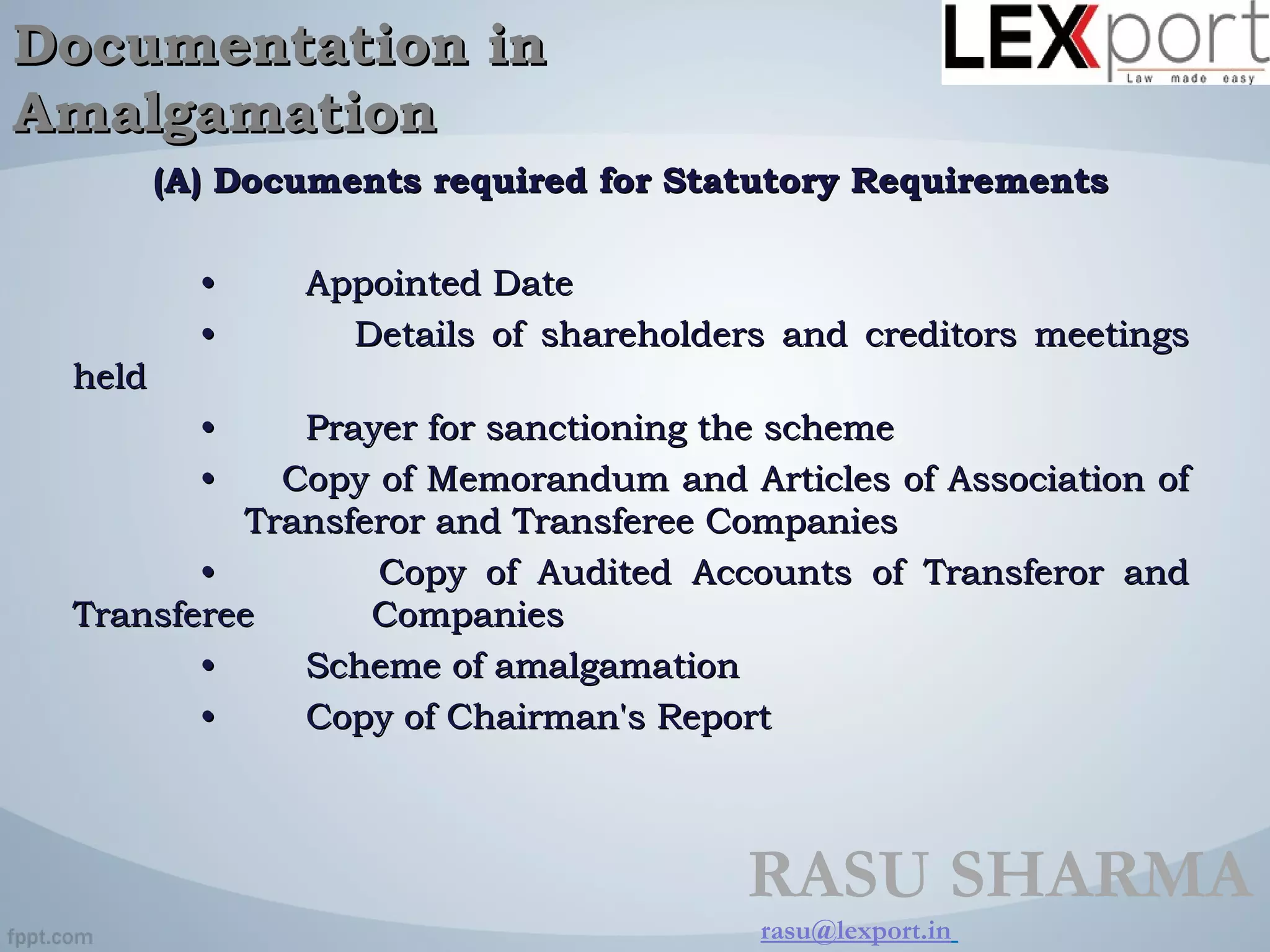Rasu Sharma provides an overview of the procedural aspects and process of amalgamation between two private limited companies in India. The document defines amalgamation as a legal process where two or more companies join together to form a new entity, with the amalgamating companies ceasing to exist and their shareholders becoming shareholders of the new company. It discusses the meaning and reasons for amalgamation under Indian law, including synergies, reduced costs, economies of scale, integration benefits, and tax advantages. The document also outlines the key authorities, documentation, meetings and steps involved in an amalgamation process in India.
















































![RASU SHARMA
rasu@lexport.in
(B) Documents required for Various Parties(B) Documents required for Various Parties
1.1. For the High Court:For the High Court:
Documentation inDocumentation in
AmalgamationAmalgamation
I. With Application (first motion) II. With Petition (second
motion)
• Application (Summons for directions in Form No.
33)
• Director's Affidavit (Form No. 34)
• Vakalatnama
• Memorandum of registered office address
• Copy of MOA & AOA (both Companies)
• Balance sheet & Profit & Loss Account of Both
Companies
• Scheme of Amalgamation
• Confirmations / NOC of creditors (Secured &
Unsecured) [Transferor Company(ies) may also
enclose, if possible, to avoid their meetings]
• Summons for direction to convene the meeting of
the members of the transferor & transferee
Companies to approve of the Scheme(Form No.
35)
• Minutes of order
• Petition (Form No. 40)
• Vakalatnama
• Copy of Balance Sheet & Profit
& Loss A/c
• Memorandum of registered
office address
• Copy of MOA & AOA ( both
companies )
• Scheme of Amalgamation with
explanatory statement u/s 393
• Valuation Report for exchange
ratio
• Chairman's Report (Form 39)
• Director's Affidavit
• Copy of Court order on First
Motion Application (Form 35)](https://image.slidesharecdn.com/c95e5157-a863-4299-a54b-7ba454cccf76-160820152043/75/Procedural-aspects-and-process-of-amalgamation-49-2048.jpg)















